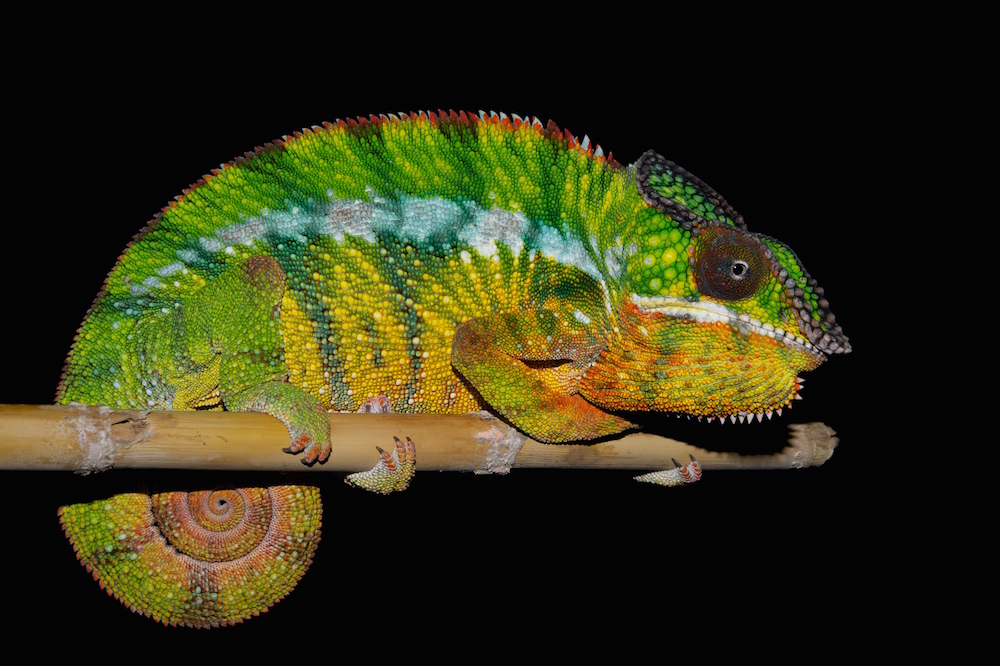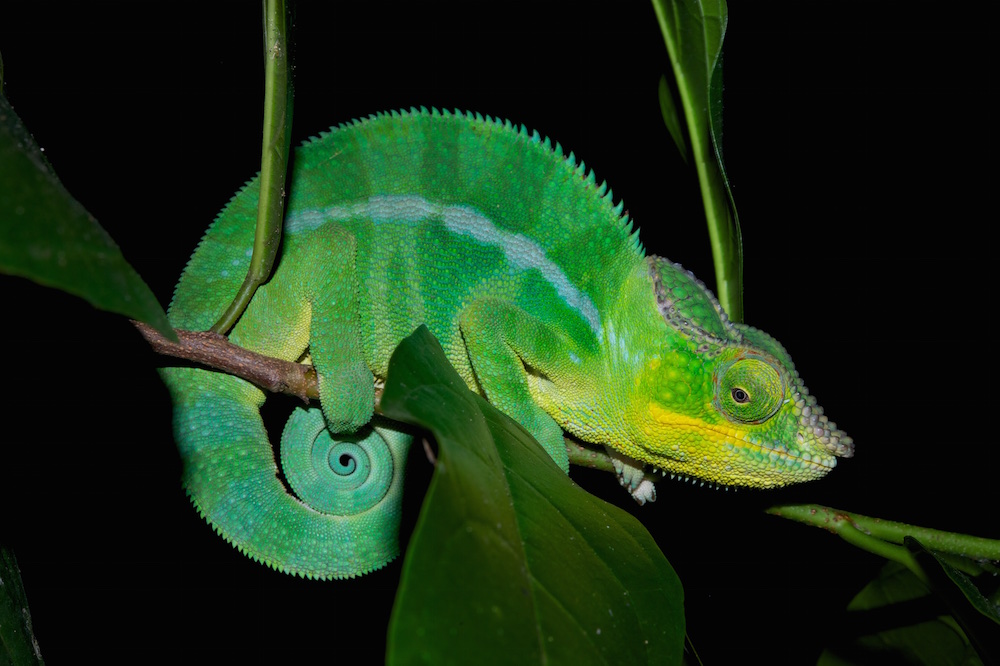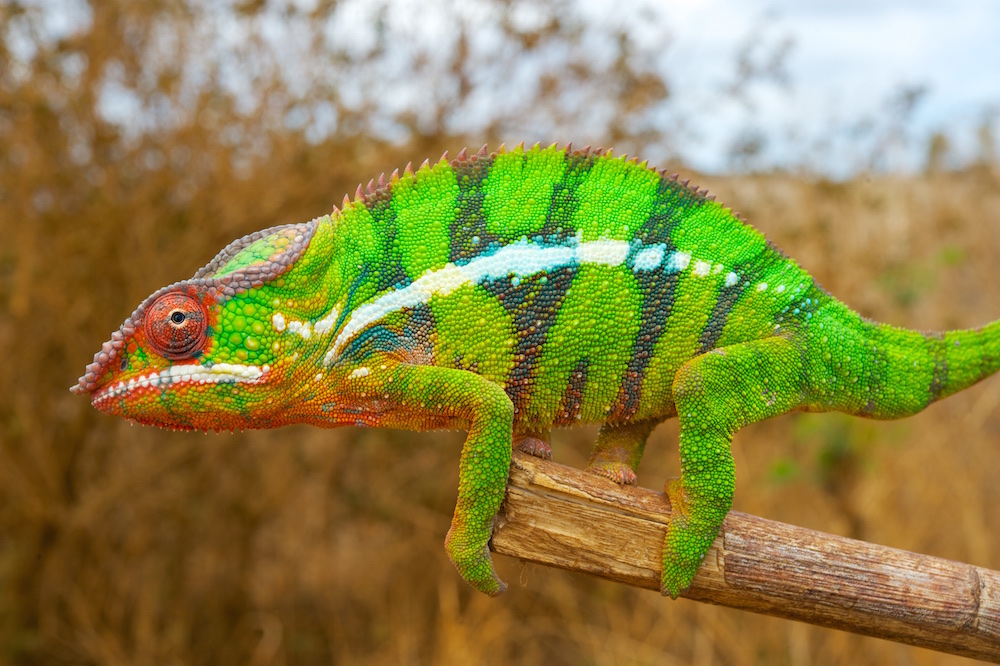Photos: How Chameleons Change Color
Countless scientists, including the ancient philosopher Aristotle, have wondered how the chameleon changes color. Now, researchers have uncovered the lizard's secret: The reptile has two layers of special cells, the top of which can relax or excite itself to create different visible colors, the researchers found. Check out these eye-catching photos of colorful chameleons. [Read the full story about how chameleons change color]
Complementary colors
The male panther chameleon (Furcifer pardalis) lives in Madagascar. Male chameleons often change color during social interactions, such as when they express dominance over another chameleon or when wooing a member of the opposite sex. The lizards may also use their color-changing abilities to camouflage themselves from predators. (Photo credit: Michel Milinkovitch)
Curled tail
Chameleons, such as F. pardalis, have long projectile tongues, independently movable eyes and two toes that point forward and two that point backward, according to the researchers of a new study. Chameleons also move at a very slow pace. (Photo credit: Michel Milinkovitch)
Green camouflage
Some animals change color when their skin cells disperse or aggregate different pigments, but chameleons don't operate this way. "We realized that the general interpretation on how chameleon change color cannot be correct," said study senior author Michel Milinkovitch, a professor of genetics and evolution at the University of Geneva in Switzerland. (Photo credit: Michel Milinkovitch)
Get the world’s most fascinating discoveries delivered straight to your inbox.
Flashy colors
Chameleons have two layers of special skin cells, the researchers found. The upper layer, which is more prominent in males than in females and juveniles, can change color by changing its structure and how it reflects lights, they said. (Photo credit: Michel Milinkovitch)
Chilling out
The bottom layer of cells appear to reflect near-infrared light from the sun. While these cells may not help chameleons change color, they may help the lizards stay cool on hot, sunny days, the researchers said. (Photo credit: Michel Milinkovitch)
Inspirational cells
The chameleon's color-changing abilities may inspire new technologies that shift color, just like the lizard has been doing for hundreds of millions of years, Milinkovitch said. (Photo credit: Michel Milinkovitch)
Color shift
This male chameleon changed color, from green to yellow. Its red markings also became more vibrant as it altered its hues. (Photo credit: Michel Milinkovitch)
Follow Laura Geggel on Twitter @LauraGeggel. Follow Live Science @livescience, Facebook & Google+.

Laura is the managing editor at Live Science. She also runs the archaeology section and the Life's Little Mysteries series. Her work has appeared in The New York Times, Scholastic, Popular Science and Spectrum, a site on autism research. She has won multiple awards from the Society of Professional Journalists and the Washington Newspaper Publishers Association for her reporting at a weekly newspaper near Seattle. Laura holds a bachelor's degree in English literature and psychology from Washington University in St. Louis and a master's degree in science writing from NYU.









